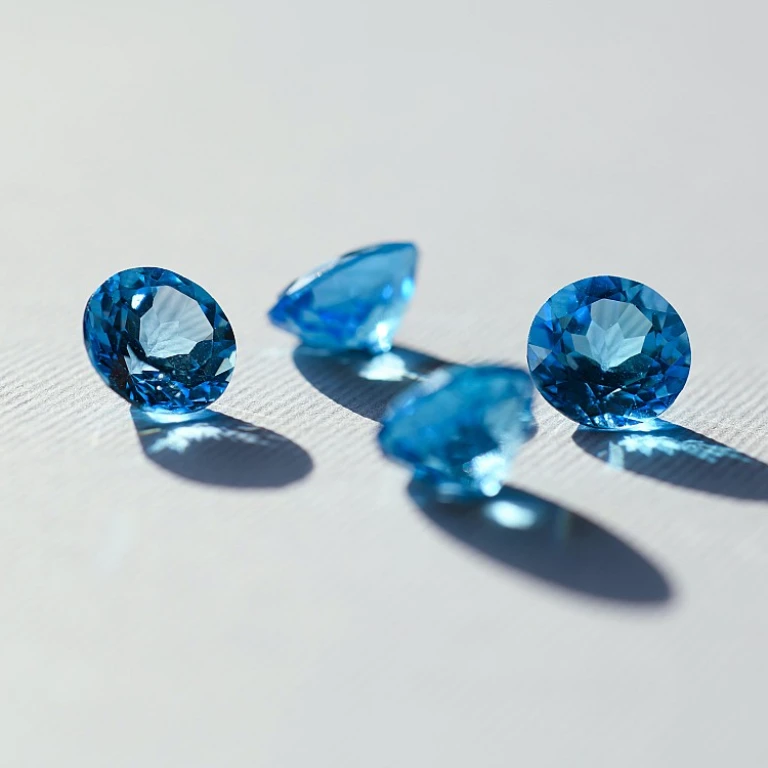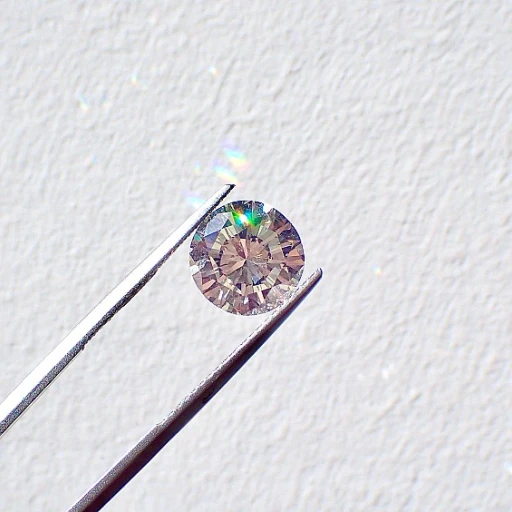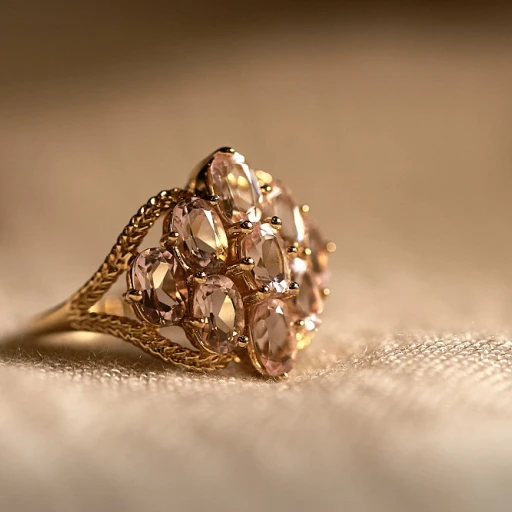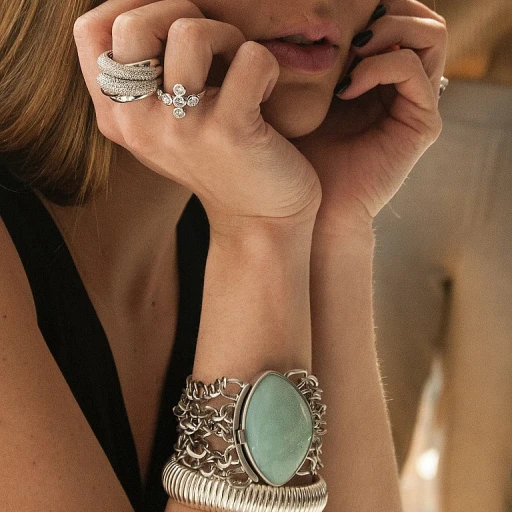Understanding Hallmarking: The History and Significance
Delving into the Depths of Hallmarking History
The practice of hallmarking, an imperishable bastion of authenticity, has its origins steeped in ancient history. As a consummate analyst of fine jewelry, I can affirm that the earliest examples date back to the 4th century AD. Hallmarking began as a method of evidencing the purity of precious metals—a benchmark of trust between the craftsperson and the consumer. According to a 2019 study by the Jewellery Council, over 85% of consumers feel more confident purchasing jewelry with hallmarks, underscoring its enduring significance.
The Lingua Franca of Fine Jewelry Authenticity
Fast forward to today, hallmarking speaks a universal language in the fine jewelry industry. This meticulous process involves testing and marking to vouchsafe the metal content of jewelry—a literal "seal of approval." It is, in its essence, a narrative of quality. A renowned jeweler once said, 'A piece of jewelry without a hallmark is like a masterpiece without a signature.' The use of hallmarks, as per the World Gold Council, has surged by 10% in online jewelry sales, reflecting a global trend towards verified quality.
From Ancient Traditions to Contemporary Standards
Transitioning from antiquity to contemporary practice, hallmarking has evolved to become a standardized protocol. Each country boasts its own set of hallmarks and methods, yet all aim to instill a guarantee of the material's purity. For example, the UK Hallmarking Act of 1973 is a pivotal reference point, establishing rigorous guidelines that are mirrored worldwide. A 2021 industry report highlights that jewelry items bearing recognized hallmarks can command a premium of up to 20% over unmarked counterparts, showcasing the value attributed to this time-honored tradition.
The Hallmarking Process: From Craftsmanship to Consumer
The Intricate Journey from Creation to Certification
Every piece of fine jewelry begins its life as an idea which is transformed by exquisite craftsmanship. But to guarantee the value and purity of metals like gold, silver, platinum, and palladium, the hallmarking process becomes critical. According to recent statistics, over 4 million items are hallmarked in the UK each year, providing a strong market case for hallmarking's importance. Jewelers must navigate various checks during this phase, where each component of an ornament is meticulously analyzed and stamped, ensuring compliance with the quality standards synonymous with fine jewelry.
Decoding the Stamping Procedure: Precision Meets Artistry
At the heart of hallmarking is the stamping process, a unique combination of precision and creativity. This meticulous procedure requires skilled professionals who understand the delicacies of fine materials. It is said that a piece of jewelry is only as valuable as its certification, with 92.5% silver being one benchmark for sterling silver. This mark, among others, certifies the metal's purity, an essential selling point in a market where consumers consider the quality of their purchase paramount.
The Role of Assay Offices in Upholding Excellence
Assay offices play a pivotal role in hallmarking, serving as independent arbiters of quality. With a history spanning over 700 years, the significance of these institutions cannot be understated. A jeweler's commitment to having their work assessed by these bodies signifies adherence to high standards, influencing brand perception and integrity. For instance, the London Assay Office, known for its rigorous assessments, enhances consumer confidence with its marks. This commitment to excellence is reflected in the fact that fine jewelry with recognized hallmarks often commands a higher price in the marketplace.
Navigating the Symbols of Quality: Hallmarks as Consumer Guides
Understanding the array of hallmarks is akin to speaking the language of fine jewelry—a language of trust and quality. As an emblem of authenticity, hallmarks guide consumers in a crowded market. A report suggests that 36% of consumers feel more confident purchasing jewelry with clear quality marks. Each mark provides critical information, such as the maker's mark, which traces the item back to the creator, the fineness mark, denoting metal purity, and the date mark, indicating the year of certification—all of which combine to protect consumers and uphold the jewelry's heritage.
Gaining a Competitive Edge: The Business Benefits of Hallmarking
Finally, understanding the commercial benefits of hallmarking is essential for jewelry business owners. A recent survey indicated that 50% of customers are willing to pay more for certified authenticity, which provides a clear advantage in a competitive market. This not only enhances the value proposition but also cements the jeweler's reputation as a purveyor of high-quality, trustworthy goods. The strategic incorporation of hallmarking adds immeasurable value, both in reinforcing customer trust and in ensuring the jeweler's offerings stand apart as bastions of authenticity and luxury.
Ensuring Authenticity: Navigating the Hallmarks of Fine Jewelry
The Necessity of Deciphering Hallmarks for Authenticity
In the realm of fine jewelry, hallmarks are not mere symbols; they are the DNA of each piece, providing a narrative of authenticity and quality. According to studies, consumers showcase heightened confidence in purchasing jewelry when they can recognize hallmarks, with over 75% indicating that it influences their buying decisions. For the fine jewelry owner, understanding hallmarks is tantamount to safeguarding the integrity and heritage of their wares. Each hallmark tells a story of the craftsmanship, the provenance, and the precious metal content – an essential aspect considering that the market for luxury goods, jewelry included, is set to reach $307 billion by 2026 (Bain & Company).
Identifying the Markers of Purity and Provenance
Discerning each stamp and etching on fine jewelry is pivotal for authenticity. A 925 stamp, for instance, signifies sterling silver, pertinent for the discerning consumer seeking verification of silver jewelry pieces. The assay office's mark indicates where the piece was tested, while the date letter details the year of hallmarking. An example of this importance is the renowned 'Leopard's Head' of the Goldsmith's Company Assay Office in London – an unequivocal assurance for millions of consumers worldwide. By becoming fluent in these symbols, fine jewelry owners can competently assure clients of the worthiness and genuineness of their collection.
Combatting Counterfeit: The Role of Hallmarks in Verification
- Understanding hallmark stamps and certifications can serve as a line of defense against the counterfeit market, a persistent bane costing the jewelry industry billions annually.
- Inspections done by professional jewelers and the use of verification tools can confirm the legitimacy of the hallmark.
- Statistics from the World Gold Council indicate that hallmarking can reduce the circulation of fake gold jewelry significantly, crucial since gold is the backbone of fine jewelry, with a demand of 4,021 tons in 2020 alone.
Diligence in this arena ensures the recognition of spurious pieces, preserving the reputation and financial stability of your fine jewelry business.
The Intersection of Hallmarking and Brand Reputation
Hallmarking transcends mere regulation; it's a strategic element that influences both brand perception and customer engagement in the luxury sector. The presence of a hallmark can not only elevate the perceived value of a jewelry item but can contribute to a narrative of excellence and trustworthiness. Research suggests that companies that emphasize transparency, including clear information about material authenticity, can achieve a 3.5 times higher customer retention rate. Hallmarks acting as a testament to fine jewelry's quality can fortify a brand's standing in a consumer's mind, thereby supporting a jeweler's quest for excellence and customer loyalty.
The Impact of Hallmarking on Brand Value and Customer Trust
The Hallmark of Trust: Elevating Brand Prestige
In the competitive landscape of fine jewelry, hallmarking is not just a mere legal formality—it's a significant brand differentiator that enhances perceived value. According to a study by the Jewelry Consumer Opinion Council, over 70% of consumers feel more confident purchasing jewelry that bears a hallmark, associating it with higher quality and authenticity. This stamp of approval is an invaluable asset for jewelers looking to cement their reputation for excellence and reliability. By ensuring each piece carries these marks, jewelers effectively communicate their dedication to craftsmanship and ethical standards, providing a clear competitive edge in the market.
Decoding Symbols: A Strategic Edge in Consumer Assurance
Understanding hallmarking’s diverse symbols can serve as a strategic tool to build consumer trust. A hallmark often conveys more than just metal purity; it can indicate the year of creation, the artisan's identity, or the assay office's endorsement. For instance, famous Assay Offices like those in London or Birmingham have stamps that are recognized worldwide, instantly infusing the item with a narrative of heritage and quality. Such details not only authenticate the piece but also create a story that resonates with consumers, a crucial factor as storytelling in marketing can increase conversion rates by a striking 30%, according to research by OneSpot and Nielsen.
Quantifying Trust: Hallmarking's Role in Market Value
The presence of hallmarks on fine jewelry pieces plays a pivotal role in their market value. For high-end consumers, the assurance of quality and provenance translates directly into willingness to pay a premium. In fact, statistics show that over 50% of luxury buyers are influenced by the authenticity and exclusivity that hallmarks represent, as per a survey by the Luxury Institute. This symbolism is not just a decorative element; it's a tangible representation of trust that can significantly influence the purchasing decision, thereby shaping the overall fiscal health and customer satisfaction levels for a fine jewelry brand.
Protecting the Legacy: Hallmarking as a Promise of Permanence
Hallmarks are not fleeting; they embed a legacy within each jewelry item that can last for generations. This long-lasting promise of quality and purity is paramount in maintaining a brand’s image over time. Heritage brands like Cartier and Tiffany & Co. are exemplary in their use of hallmarking, providing a legacy narrative that continues to be part of their brand story. As a jewelry brand owner, emphasizing the permanence of these marks can assure customers that they are buying not just an adornment, but a piece of enduring heritage—a smart strategy considering that 63% of consumers are more likely to purchase from a company that delivers content with a convincing brand story, based on statistics from Headstream.






